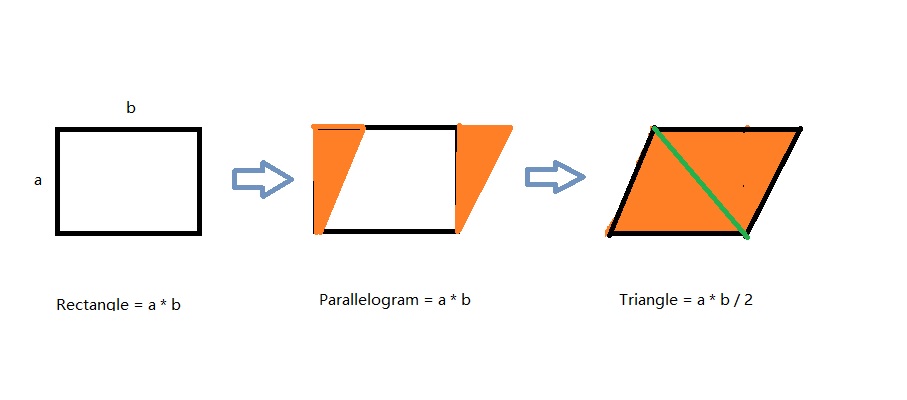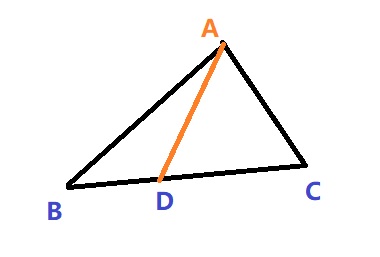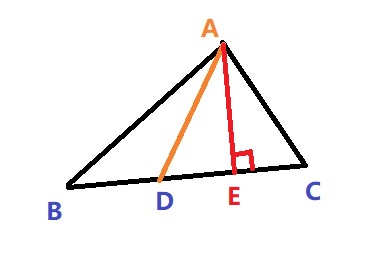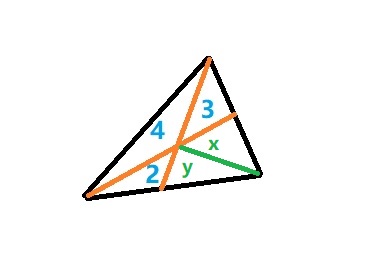Teaching Kids Programming: Videos on Data Structures and Algorithms
We know the area of triangle can be computed as the half of one side multiplied by the height of it. This can be seen from the above – the rectangle area is a * b where a and b are the length of two sides. And a Parallelogram can be transformed from a corresponding rectangle by cutting a piece and put it on the otherside. The triangle is half of a parallelogram.
The question of today is to compute the area of the following:
Geometry of Triangle Area and Side Law
Given a Triangle ABC, if we pick a point at side BC and make it D, AD divides the triangle into two parts, the left triangle ABD and right triangle ADC.
We know the area of ABD is BD*AH/2 where AH is the corresponding height to the side BD.
Also, the area of ADC is DC*AH/2.
Thus we have
S(ABD) to S(ADC) is equal to BD to DC as the common factors AH and 2 are cancelled out.
Let’s look at this triangle again. We split the unknown area by two namely x and y.
Then, we have:
and
based on above law, the equations are established because the Area Ratio is equal to the ratio of two common edges.
Then, two equations two unknowns, we can solve for x and y, and the answer is x+y.
In theory, we can apply Monte-Carlo simulation to randomly generate points and count the number of the points that fall into the area of (x+y). However, it might be tricky to test whether the random point falls in the area.
–EOF (The Ultimate Computing & Technology Blog) —
loading...
Last Post: Python Numpy Memory Leaks Due to PYTHONMALLOC (C Python and Address Sanitizer)
Next Post: Teaching Kids Programming - Algorithms to Count Surface Area of 3D Shapes (Geometry and Math)





 and
and